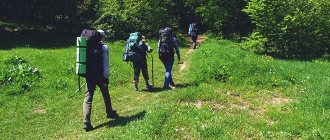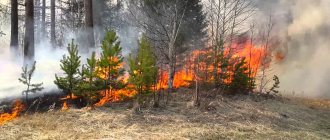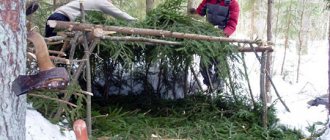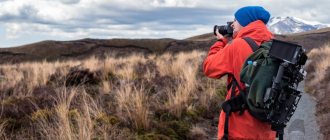Emergency Survival Basics
Knowing the basics of survival is a necessary element to preserve your life in nature. After all, without knowing how to behave in a given situation, it will be very difficult to escape. The most common cases are when a person needs to survive cold, hunger and heat. It is very useful to know how to behave correctly in such conditions.
— Survival during starvation.
— Survival at low temperatures.
— Flood survival.
— Earthquake survival.
— Survival during hurricanes and storms.
Forest survival items
• Large knife (machete, cleaver, etc.). Designed for rough work, can become a weapon or replace an axe. Allows you to cut up a carcass, etc.
• Small fixed blade knife . A durable small tool designed for small and painstaking work. It is used to prepare food, make elements of weapons, and create traps. In skillful hands it is an excellent weapon.

• Axe . It will help you cut down trees, chop wood, make notches, dig, butcher a carcass, and act as a hammer. Keep in mind that an ax and a machete are different tools and cannot always replace each other.
• Saw . Useful for construction. This tool is not necessary; for example, it can be replaced by the second blade of a machete (if the upper edge of a large knife is made in the form of a saw).

Many experienced survivalists will say that these tools are enough to survive in the forest. Indeed, with their help you can get fire and food, build a shelter and arrange a normal autonomous existence for yourself. But for the other 99% of people, doing all this is unthinkable. Therefore, let’s talk about what else is worth preparing in advance in order to leave and live in the forest on your own for a while.
• Sapper shovel . Digging of earth, dugouts, weapons of defense in capable hands.

• Backpack . Necessary for carrying equipment, after fishing and hunting - for transporting catch and prey, for picking berries, etc. The best option is with a frame and a large number of pockets and compartments. The backpack must be of high quality, made of durable, water-resistant materials.
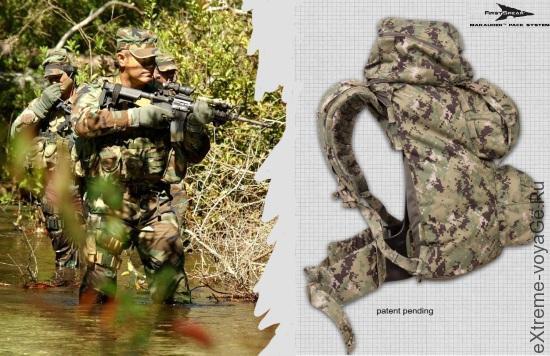
• Grindstone . If you don't know how to sharpen knives in the field using scrap materials, this equipment will be essential.

• Survival instructions . The more the better. Paper version.
• Flint . Matches or lighters (if you happen to take a lighter with you) tend to run out. If you don't know how to make fire using native methods or using a knife and improvised materials, take FireStarter. A good model will allow you to build a fire hundreds and thousands of times.

• Water purification systems . These can be compact military filters and special tablets. They take up little space, but can help out in difficult situations. Of course, boiling is good, but using a fire is not always possible.
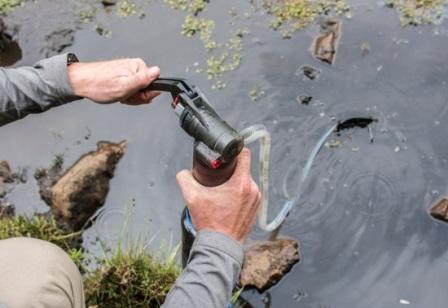
• Navigation equipment . This should be a high-quality compass and detailed paper maps in a waterproof design for areas within a radius of 100 km. Natural and man-made objects must be marked on them.

• Kitchenware . Of course, game can be cooked in ashes, your own skin (hot stones), etc. But sooner or later you will want soup. For this you will need an aluminum pot. Also take a spoon and a container for carrying water.
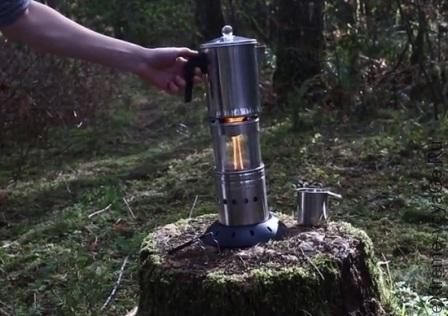
• Awning . It takes up less space than a tent, but protects from wind, sun and rain. If there is no awning, take plastic bags or tarpaulins. A sleeping bag will also come in handy.
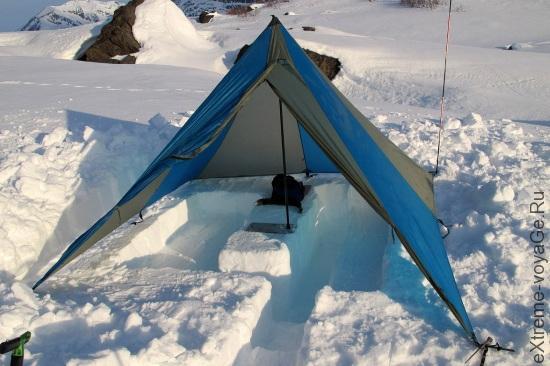
• Cloth . Must be versatile, durable and waterproof. It will have to be used in hot, cold, windy and rainy weather. It's best to use a layering concept (waterproof layer, warm outer layer, base layer, inner layer, spare underwear and socks, bandana and warm hat). For example, a raincoat (poncho), a warm jacket (coat), a sweatshirt, a T-shirt.
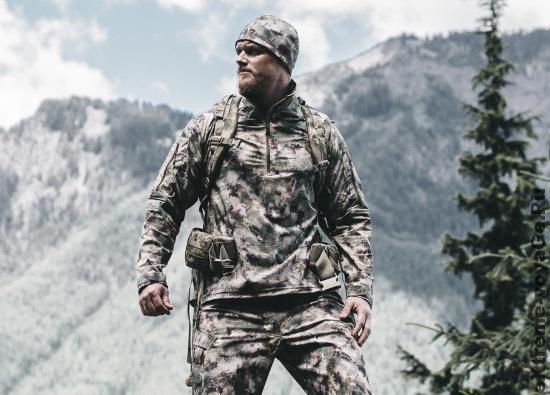
• First aid kit . Ideally, such a set should be everywhere - at home, at work, in New Zealand, in the car. The first aid kit should be compact, lightweight and include remedies for common problems - stomach, heart, high fever, etc. We have written about this several times on the pages of www.extreme-voyage.ru.
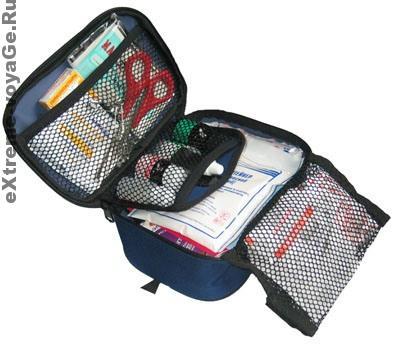
• Paracord . The importance of this equipment cannot be overestimated. Housing construction, setting traps, repairs, making a fire in difficult weather conditions, etc.
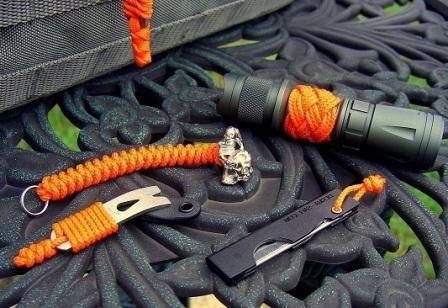
• Lines and hooks . This small equipment, in the presence of bodies of water, will provide you with the most easily obtained food.

Homemade fishing hook made of wood
Methods of obtaining water and food
Finding water is one of the most important tasks for a surviving person, since no person can live long without water. But getting water is not enough; you also need to be able to clean it and disinfect it so as not to become infected with anything. Luckily, there are many easy ways to do this.
- Finding water.
- Water purification.
- Finding food.
Getting food is also very important. Of course, many have heard that a person can live without food for several weeks, or even a month. But what will his physical strength be like after such a long fast? The faster a person can find food in nature, the more strength he will have to survive in the wild conditions of the world around him.
Methods of making fire
Fire can make things much easier for surviving people, so the ability to make it is very valuable. Of course, if you happen to have a lighter in your pocket, then you shouldn’t worry too much. But what if you don't have anything like that? In this case, it is necessary to resort to other, more difficult methods of making fire. And fortunately, there are quite a lot of them.
- Making fire by friction.
— Making fire using lenses.
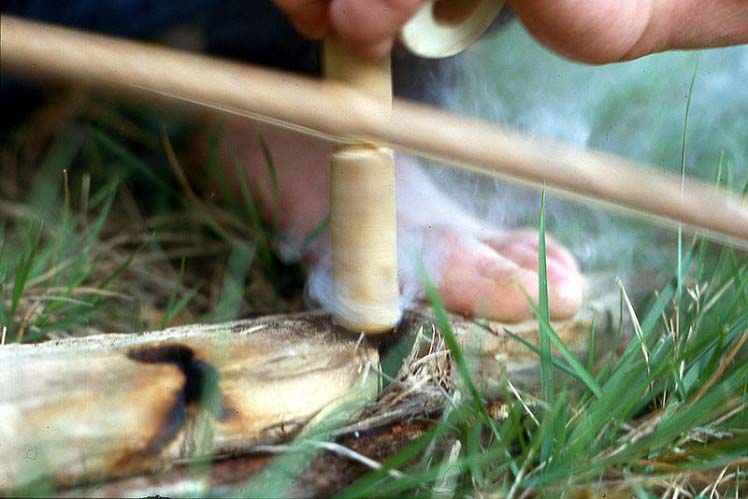
The author of the photo is 120, (the photo has been changed).
Shelter construction
The ability to build a temporary shelter is a very important skill in saving yourself and your loved one in the wild. Even the flimsiest and most unreliable shelter can protect from bad weather, which is especially important at night, since the temperature drops noticeably. It will also help protect against annoying insects, which is of great importance in forests in summer and autumn.
— Construction of a hut.
- Shelter made of snow.
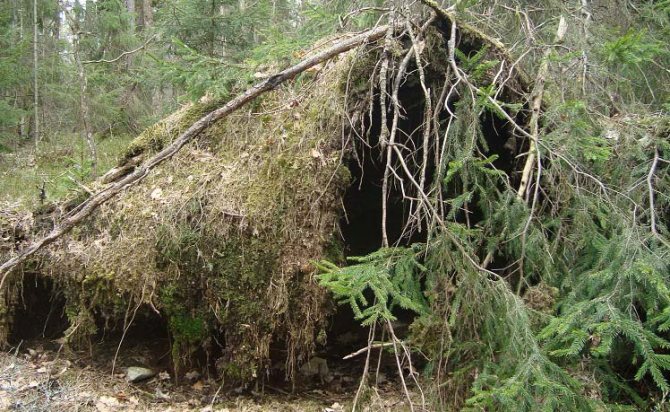
Photo by David J, link to the original (photo has been modified).
Making homemade weapons
Making homemade weapons or tools is one of those skills that can make survival in nature much easier. This is necessary both for obtaining food and for protection from animals. Many animals are noticeably stronger than humans, so when meeting them, there would not be much chance of survival if not for the ability to make weapons. This is the knowledge that can equalize people even with the most ferocious predators.
— Making a spear.
— Making a club.
Basic Skills
To be able to survive in autonomous conditions, you need to know what makes up a basic set of knowledge and skills - the basics, without which you will not be able to survive long away from civilization. There are several basic points that both adults and children should understand, and theory and practice are equally important.
Extraction of fire and water
The ability to make fire, build and maintain a fire will be indispensable at any time of the year. In winter, a simple hearth will allow you to survive the frost, and in summer you can simply warm up if the night turns out to be cold. In addition, a fire is needed to cook food, because everything found or obtained in nature for food must be subjected to heat treatment.
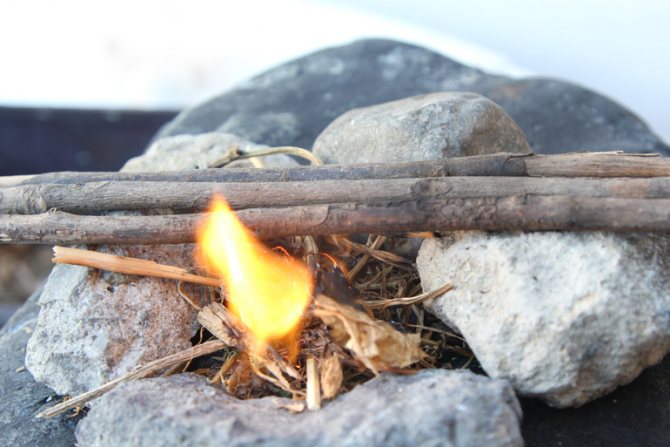
The fire should be started using matches or flint. Even children should be taught this. The fire is set up according to this principle: it either burns hot or burns for a long time. In the first case, you can quickly warm up and dry things, in the second, you can cook food and boil water.
Water extraction in autonomous conditions is carried out using plastic bags. When going into the forest, you need to take several pieces with you. Important: the body uses up moisture faster when a person finds himself in extreme conditions, so you need to start collecting water before its reserves run out.
You should not drink any fresh liquid that you find, as it may contain dangerous bacteria. If there is any doubt about the purity of the water, it is advisable to boil it over a fire.
Using cellophane, water is collected as follows:
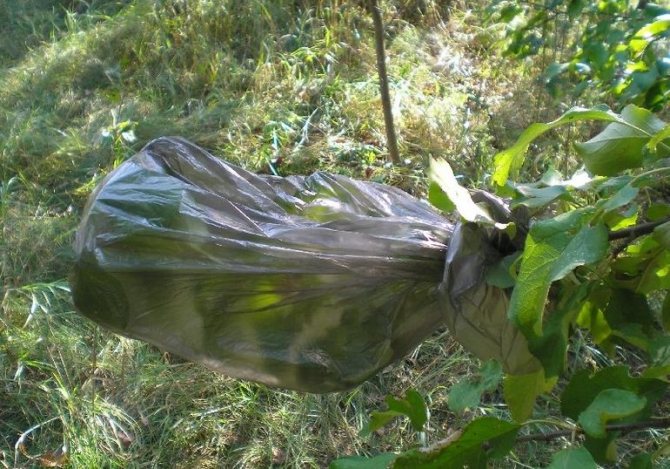
- choose a twig with leaves;
- they put a bag on it;
- tie the edge tightly or wrap it with thread;
- after a few hours, when droplets of moisture appear inside, remove the structure and drain the liquid;
- choose another branch and repeat the procedure.
Location orientation
Survival in autonomous conditions requires the ability to find the road, and therefore navigate the terrain. Main tools:
- compass;
- map;
- natural signs.

You don’t just have to have the card with you, you need to learn how to read it. There are many topographical signs, each of which has its own meaning. Such knowledge will be very helpful when a person finds himself far from civilization.
A basic skill is the ability to determine the cardinal directions. It is also important to learn to find the standing point - the place where the person is at the moment. Having a map, you should correlate it with the cardinal points. To do this, large linear landmarks are found, including the following:
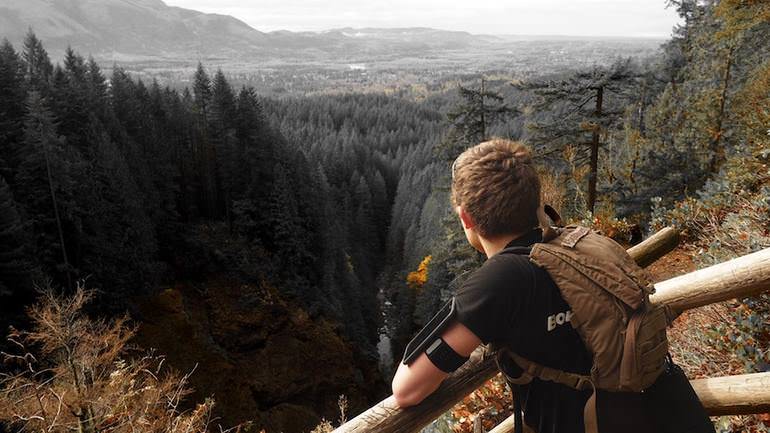
- forest boundaries;
- extended areas of relief (hills, plains, ravines);
- rivers;
- streams;
- roads;
- clearings.
If you don’t have a map with you, you will have to determine the sides of the horizon by surrounding objects or celestial bodies.
It’s worth practicing your skills in advance using different exercises. One of the most effective is continuous azimuthal movement in a given direction.
Habits of animals
Knowledge of the habits of wild animals is the most important factor for survival in conditions of autonomous existence. When passing through a forested area, you should be extremely careful. The behavior of different animals is different, and it is not possible to briefly describe all the nuances. For example, about snakes it is worth knowing that when meeting them you should not attack or throw objects. It is better to step aside and wait for the reptile to crawl away.
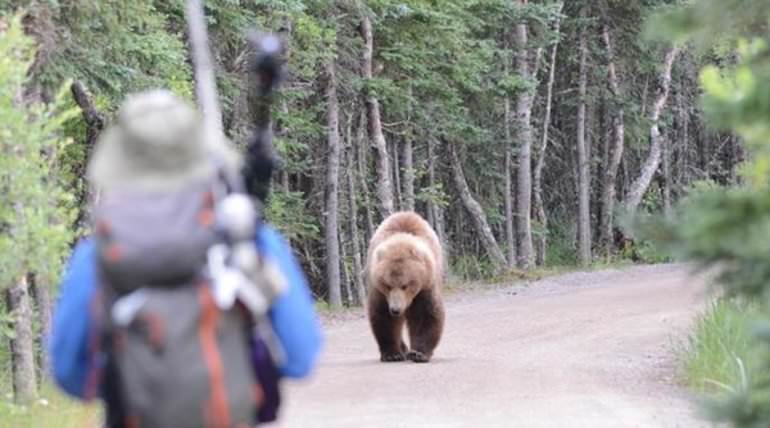
An animal does not attack without a reason. Loud noises can provoke it, but only if one or two people are walking. When moving through the forest in a group, on the contrary, you need to make noise and talk as loudly as possible. Then the animals will avoid the company.
Once you find cubs, you must not approach them, touch them, or even take photographs. If there is a mother nearby, flirting with the offspring can end in tears. It is better to bypass the cubs, and as far as possible.
When you see a bear, you should not run away, fall, or turn your back on it. You need to slowly back away and at the same time call for help. It is recommended to lift a jacket or other clothing above your head to appear taller - this may scare away the animal. You should not climb a tree, because the animal will climb up after you, and then you will no longer be able to escape.
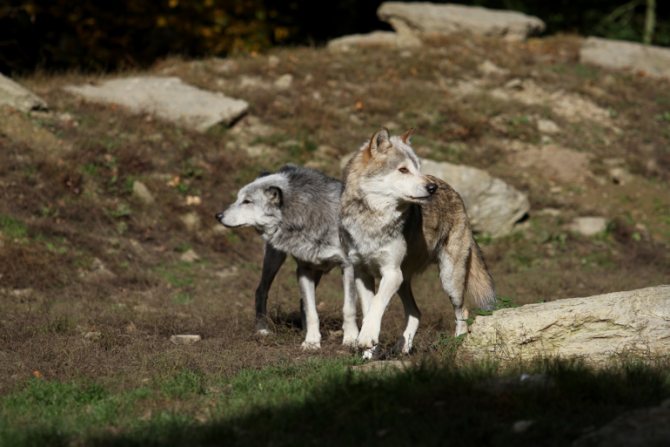
When meeting a wolf, you should also not turn your back and try to run away. Also, you should not look the animal in the eyes - he will take this as a challenge. You can climb the nearest tree and wait for the wolf to leave.
Another dangerous animal that is found in the forests is the wild boar. He is very careful, hears well and tries to get away from people. Healthy males do not pose a danger , but wounded wild boars and females with cubs should beware. You won't be able to run away from the boar; the only way out is to climb a tree. The beast will not wait and will leave. To scare him away, you can throw objects in your pockets or branches.
Providing assistance and constructing a shelter
In autonomous conditions, situations often arise when a person requires first aid. Trouble can happen even to a healthy tourist, but those who are sick are at increased risk. Incidents when you need to provide first aid:
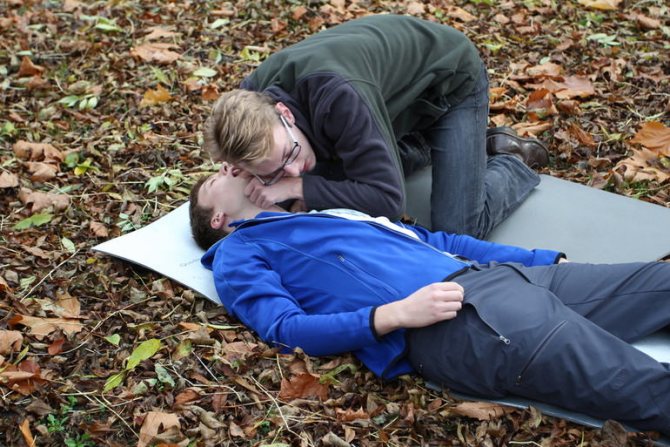
- injury;
- stretching;
- fracture;
- dislocation;
- loss of consciousness;
- heart attack;
- burn;
- frostbite;
- heatstroke;
- animal or insect bite.
During first aid training, the emphasis is on practicing the movements and the habit of acting calmly. If a person is confused, there will be little use. For each case there is a set of actions that must be performed in a certain sequence. In addition, it is important to know what medications or improvised means can be used in a critical situation. Then, in the event of an injury, attack or other incident, the traveler will be able to save his companion or himself.
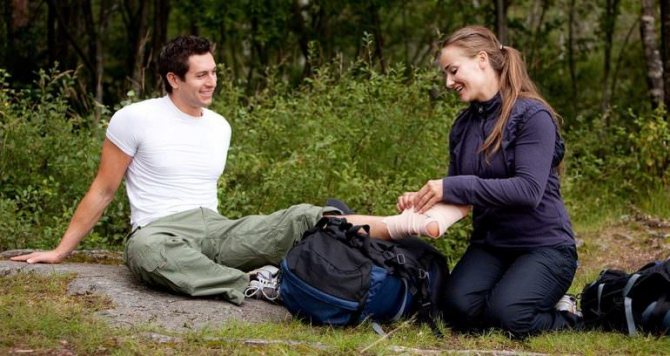
When food and water have been obtained, the fire has been lit, and first aid has been provided, it is time to begin arranging a place to spend the night. A reliable shelter can be made from thick twigs, branches and spruce branches. There are several types of huts that perform different functions, so it is important to immediately decide on the design. It also matters where the hut will be located. Places where it is better not to put it:
- under a rock;
- in a hollow with traces of water;
- in an area that is blown from all sides;
- on the animal trail.
It is better to choose a type of hut that can be erected with minimal effort. Branches and spruce branches on the roof are laid so that raindrops flow not inside, but onto the edges. The floor in the shelter is covered with leaves or spruce branches.
Psychological and physical preparation
Psychological preparation is another important factor in survival and autonomous existence. It lies in the fact that a person learns to bring actions to automaticity. This is necessary so that in any situation the hands and brain act harmoniously. Do not underestimate the importance of such events: often even experienced tourists get lost when they find themselves in an unusual situation, and all because they cannot use the skills they possess.
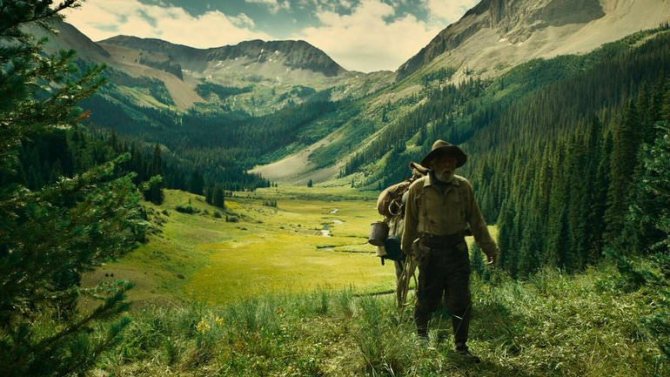
Important: training is more effective when it is conducted under the guidance of an instructor who sets the right example.
Physical training involves a variety of loads. They should be regular and not excessive, but sufficient to keep you in good shape. If there are children in the family, you need to study together. Then the younger members of the family will develop useful habits from an early age. Basic exercises:
- run;
- push-ups;
- pull-ups.
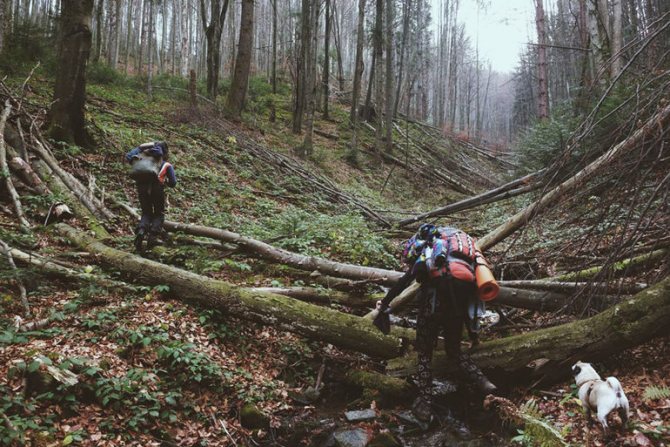
What distinguishes extreme conditions from autonomous conditions is the factor of surprise. In the first case, the person is more prepared. He studies in advance the situation in which he will find himself, prepares for the trip, takes a set of necessary things, a supply of water and food. There is also moral preparation.
Extreme conditions are similar to autonomous ones, but the main difference is that the person is not mentally prepared for the situation. So, you can get into a difficult situation as a result of a plane crash, natural disaster, or accident. In addition, you can simply lose your way and get lost.
In both cases, the lack of familiar comfort requires the ability to adapt to the situation. The chances of survival are highest for those who are prepared for difficulties morally, theoretically and practically. Self-confidence will help you at the right time, preventing you from getting confused.
Natural hazards
In the nature of our world, there are many dangers that await humans, literally, at every step! These include various poisonous plants, small insects, which are especially numerous in wooded areas, and dangerous animals. Protecting yourself from all these dangers is not an easy task, but it is still possible. You just need to know how to behave correctly and perform all your actions with an eye on this knowledge.
— When meeting wild animals.
— Methods of protection against mosquitoes.
— Methods of protection against ticks.
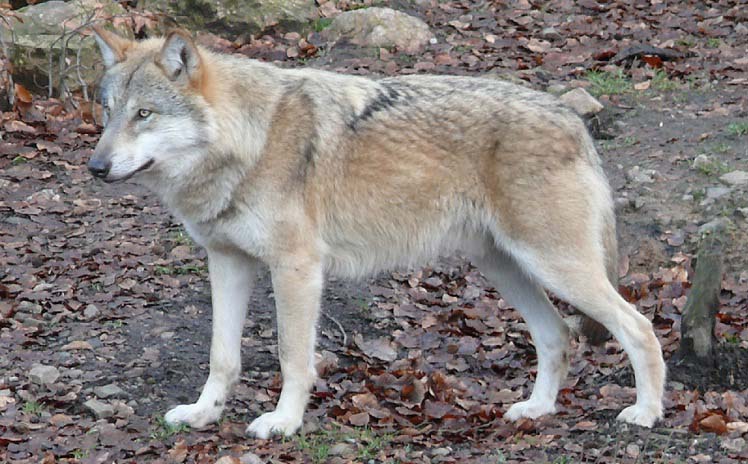
The author of the photo is stachelbeer, link to the original (photo has been changed).
First aid
The ability to provide first aid is applicable not only in nature, but also in everyday life. After all, it often happens that injured people need urgent medical care, but there is no one to provide it. After all, the ambulance takes time to get to the place. A person with first aid skills can save the victim, at least helping him survive until the doctors arrive.
- Artificial respiration.
— External cardiac massage.
- Stop bleeding from the wound.
- Help with fractures.
But if you are left alone with nature and have received some kind of injury, you should not hope for the arrival of doctors. And here the ability to help yourself is invaluable.
Summary of a lesson on life safety on the topic “Autonomous stay of a person in nature”
LESSON PLAN
GBOU secondary school in Beslan
Life safety teacher Kargiev V.K.
TOPIC: AUTONOMOUS STAY OF HUMAN IN THE NATURAL ENVIRONMENT
10th GRADE.
The purpose of the lesson:
To familiarize students with the concept and features of autonomous human existence in the natural environment, voluntary and forced autonomy.
Lesson type:
combined
Educational and visual complex:
PC, projector, compasses.
Management:
textbook on life safety, grade 10, NVP - 1985, Schoolchild Encyclopedia "Emergency Situations" Moscow 2004.
Lesson objectives:
- Voluntary and forced autonomy.
- Ways to navigate the terrain and using a compass.
- Accommodation for the night, movement along the route.
- International rescue codes.
- Distress signals.
- Making a decision about moving or stopping at the emergency site.
During the classes:
I. Introductory part
- The autonomous existence of a person in the natural environment is his independent existence in natural conditions.
- The autonomous existence of a person in natural conditions can be 1. voluntary 2. forced.
II. Main part
— explanation of new material:
Autonomous existence of man in the natural environment
- this is its independent existence in natural conditions.
Autonomous existence of a person in natural conditions can be voluntary
or
forced.
1. Voluntary autonomy
- this is a situation when a person or a group of people, of their own free will, for a certain purpose, for a certain time, switches to independent existence in natural conditions.
2. Forced autonomy
- this is a situation when a person accidentally, due to circumstances beyond his control, finds himself in the natural environment and is forced to independently provide for his vital needs in order to survive and return to people.
Goals of voluntary autonomy.
Attention! Human activity in conditions of voluntary autonomy is aimed at achieving the set goal, and under forced autonomy, it is aimed at returning to people and normal life.
Objectives of voluntary autonomy
can be different: active recreation in nature, exploration of human capabilities for independent stay in nature, sports achievements, etc. Voluntary autonomy of a person in nature is always preceded by serious comprehensive preparation taking into account the goal: studying the features of the natural environment, selecting and preparing the necessary equipment and, most importantly , physical and psychological preparation for upcoming difficulties.
But it may happen that a person unexpectedly, against his will, due to a combination of circumstances, finds himself alone with nature.
Forced autonomy
leaves a certain imprint on a person’s condition and behavior. He finds himself in conditions for which he was not prepared; his life and health depend only on himself. He immediately faces the task of how to reach people. To do this, he needs to calm down, realistically assess the situation, and decide how to behave in order to preserve life and health.
A person’s safety in these conditions depends entirely on his spiritual and physical qualities, on his general preparation for living in the natural environment and the ability to mobilize all his knowledge and skills to achieve a single goal: to survive and reach people. After all, you will need to get drinking water, provide yourself with food, arrange lodging and shelter from bad weather, navigate the terrain, move in the right direction and send distress signals.
- Orientation: using local objects and a compass. Slide accompaniment.
Orientation
called the ability to determine one’s location relative to the sides of the horizon: North (N), South (S), East (O), West (W). Orientation can be carried out using a compass, celestial bodies, stars, surrounding objects, local features, and topographic maps.
Determining the sides of the horizon using a compass. Slide 1, 2
Having a working compass eliminates almost all problems of determining the sides of the horizon. The method of its application is well known. The serviceability of the compass is checked by bringing a metal object to the needle and removing the needle from stable balance. After removing the metal object, the arrow should return to its original position. If the arrow does not return to its original position or does not settle down for a long time, then such a compass cannot be used. In the stowed position, the compass needle should be slowed down.
Determining the sides of the horizon by celestial bodies, stars, moon and sun. Sides 3,4,5,6
In clear sunny weather, you can determine the sides of the horizon by the Sun. At about 7 a.m. the Sun is in the east, at 1 p.m. in the south, and at about 7 p.m. in the west. If there is a clock, the sides of the horizon are determined as follows. The hour hand must be directed towards the Sun, in this position of the clock the straight line dividing the angle between the hour hand and the number “1” on the dial will indicate the direction to the south. The clock should show local time.
At night, in the absence of clouds and fog, the sides of the horizon can be determined by the position of the North Star. The North Star is always in the north and stands out among the stars for its brightness.
To find the North Star in the sky, you need to find the constellation Ursa Major, which is a “bucket” of 7 bright stars. If you mentally draw a straight line through the outer stars and mark on it five times the distance between the stars, at the end of the fifth segment there will be the North Star.
Determining the sides of the horizon based on local characteristics. Slide 8,9,10
You can approximately judge the location of the sides of the horizon based on local signs. The bark of isolated trees is covered with moss on the north side. The bark of birches is lighter and has fewer dark spots and cracks on the southern side. In spring, snow melts faster on the south side. Anthills and bee nests are located on the south side of trees and stones. In spring, caravans of birds fly from south to north, and in autumn in the opposite direction. Stones, rocks, wooden, slate, tiled roofs are usually covered with moss on the north side. On coniferous trees, resin is released and accumulates more on the south side. During the ripening period, berries and fruits acquire the color of maturity first from the south side.
In a forest, you can determine the sides of the horizon by forest management features (clearings, quarter posts). Clearings are cut in the direction from north to south and from west to east. At the intersections of clearings, quarter posts are installed, on which numbers are applied indicating the number of the quarter. The line between the two smallest numbers is always oriented north.
Reliable landmarks in the forest are notches on tree trunks. They are applied at the height of a person’s chest, on the right side of the path (road). The presence of several notches on a tree is evidence of the proximity of a road or parking lot.
The direction of the sides of the horizon can be determined by the location of the church altar. In Orthodox churches it is always located on the eastern side, and in Catholic churches it is always on the western side. The crosses on the roofs are oriented in the north-south direction. The raised end of the lower crossbar is oriented to the north. The graves are oriented from west to east, while the cross is installed on the eastern side and oriented from north to south.
When orienting by local signs, it is impossible to definitively judge the location of the sides of the horizon from one or two observations. Conclusions can only be drawn after multiple checks of the initial results.
- Survival factors.
The first group promoting survival:
- state of health, moral and volitional qualities and psychophysiological resistance of the body to adverse environmental influences.
— level of human preparedness for extreme environmental conditions
— availability of funds (equipment, food, water, available materials)
The second group preventing survival:
— unfavorable climatic conditions
– predatory and poisonous fauna and flora
- decrease in physical and psychological activity, feeling of loneliness, fatigue, illness, receipt of any physical injury
Primary tasks in extreme and disastrous situations with forced autonomy:
- Get out yourself and help others get to safety.
- Provide first aid to the victims.
- When leaving the vehicle, take with you property that may be useful in an autonomous existence.
- Find your bearings and clarify your location.
- If necessary, build a shelter.
The decision to remain at the scene of the accident:
- A distress signal has been sent and the location is known.
- The location is not exactly determined. The terrain is unfamiliar and difficult to navigate.
- Most people cannot move independently due to their injuries.
The decision to leave the scene of the accident:
- The exact location and route of movement are known.
- There is an immediate threat to life.
- People cannot be found in this location for some reason.
- There has been no communication for three days.
- International rescue codes. Rescue signals. Slides 16,17,18
Your chances of survival increase if you know how to send distress signals to rescuers. Rescue signals must be given to a passing helicopter or low-flying aircraft.
III. Fixing the material;
— Under what circumstances can a person find himself in conditions of forced autonomy in the natural environment?
— What methods of orientation do you know?
— How to organize an overnight stay?
— What qualities, in your opinion, should a person who finds himself in forced autonomy in the natural environment have?
conclusions
1) Experience shows that people who, due to various circumstances, find themselves face to face with nature, can retain their strength for a long time and reliably protect themselves from adverse natural factors.
2) A person must always be, to a certain extent, prepared for an autonomous existence in natural conditions.
3) The results of a person’s autonomous stay in nature depend on his ability to provide for his vital needs for food, heat, water for a certain time without outside help, using the available supplies or gifts of nature.
I V. Homework:
Paragraph 1.2
Orientation
Navigation is not a prerequisite for survival. But sometimes it can still be a deciding factor. For example, if you are lost and need to find a way out of a dense forest. Yes, you may not know in which direction it is located, but, being able to determine the cardinal directions, you can constantly move in one direction. In this case, sooner or later you will get out of the forest.
— Determination of cardinal directions by celestial objects.
— Determination of cardinal directions by moss and lichen.
Rules for safe behavior in conditions of forced autonomous existence article
Rules for safe behavior
in conditions of forced autonomous existence.
- The main reasons for forced autonomous existence. Priority actions of a disaster victim.
Modern civilization and the technological revolution have surrounded man with a certain comfort. The emergence of modern designs of ships, airplanes, cars, the creation of modern means of communication, television, and household appliances changed his life and taught him to live in the wild. But it happens that a person finds himself torn out of his usual way of life, in which case the problem of autonomous existence (survival) in natural conditions immediately arises.
Reasons for forced autonomous existence in the natural environment:
- Natural emergencies: natural disasters (earthquakes, floods, hurricanes, storms, tornadoes, forest and peat fires).
- Extreme situations: sudden change in natural conditions (severe cold snap, rain, blizzard, blizzard, heavy snowfall, etc.); loss of orientation on the ground (hiking, expedition, etc.); loss of a group on the route (hiking, expedition);
- Emergency situations: accidents in air, water, railway transport, accidents and breakdowns of vehicles.
Survival is an active activity aimed at preserving life, health and performance in extreme situations.
Autonomous existence is the presence of a person in certain difficult natural or other conditions of isolation, when the likelihood of help from people and the use of technical means and other achievements is limited or excluded.
The main condition that determines the success of survival or death is a person’s mood for a favorable way out of the current situation, the desire to survive, moral obligations to loved ones, etc.
Scheme
priority actions in emergency conditions:
- Move to a safe place and help victims leave the dangerous area.
- When leaving the vehicle, take with you property that may be useful in emergency conditions.
- Provide emergency medical care to the victims.
- Find your bearings and clarify your location.
- Construct a temporary shelter in unfavorable climatic conditions.
- Determine a plan for further action: stay where you are or leave the scene of the accident.
The decision to remain at the scene of the accident is made in the following cases:
- A distress signal (or message) was sent about the location and time of the accident.
- The exact location of the incident has not been determined; the terrain is unfamiliar or difficult to navigate (mountains, forests, swamps, snow drifts, etc.).
- The direction and distance to the nearest populated area are unknown.
- Most of the people in the group cannot move independently for health reasons.
The decision to leave the scene of an accident is made in the following cases:
- The direction to the nearest populated area is known, the distance is small and the state of people’s health allows it to be overcome.
- There was an immediate threat to human life (fire, flood, ice field break, etc.).
- People cannot be found at the disaster site due to dense vegetation or terrain features.
- There has been no communication or help for three days.
When leaving the scene of an incident, you must indicate the direction of your departure: lay out an arrow, make notches in the trees, tie together tufts of grass, etc.
1.2. Autonomous human existence in the natural environment.
Forced autonomous existence
main problems.
Even today, there are often cases when a person, as a result of current circumstances, finds himself in conditions of autonomous existence, the favorable outcome of which largely depends on his psychophysiological qualities, solid knowledge of the basics of survival and other factors.
In the event of a short-term external threat, a person acts on a sensory level, obeying the instinct of self-preservation: he bounces off a falling tree, clings to immovable objects when falling, tries to stay on the surface of the water when there is a threat of drowning. There is no need to talk about any will to live in such cases.
Long-term survival is another matter. In conditions of autonomous existence, sooner or later a critical moment comes when excessive physical and mental stress and the seeming pointlessness of further resistance suppress the will. Passivity and indifference take possession of a person. He is no longer afraid of the possible tragic consequences of ill-conceived overnight stays and risky crossings. He does not believe in the possibility of salvation and therefore dies without fully exhausting his reserves of strength, without using up his food reserves.
Survival based only on the biological laws of self-preservation is short-lived. It is characterized by rapidly developing mental disorders and hysterical behavioral reactions. The desire to survive must be conscious and purposeful and must be dictated not by instinct, but by conscious necessity.
The natural environment and its physical and geographical conditions are also important for human life. By actively influencing the human body, it increases or shortens the period of autonomous existence, promotes or hinders the success of survival. Each of the natural zones determines the specifics of human life: behavior patterns, methods of obtaining food, construction of shelters, the nature of diseases and measures to prevent them, etc.
How should a person who finds himself in extreme environmental conditions behave? If there is no firm confidence in the ability to quickly get out of the current situation, and the situation does not require immediate leaving the scene, it is better to stay in place, build a fire, or build a shelter from scrap materials. This will help you protect yourself well from bad weather and maintain strength for a long time. In addition, it is much easier to obtain food in parking conditions. In some cases, this tactic will facilitate the actions of the search and rescue service, which has received information about an incident in a particular area.
Having decided to “stay put,” you need to draw up a plan for further action, which includes the following activities:
- determining your location;
- protection from the adverse effects of environmental factors;
- making a fire;
- sending distress signals;
- obtaining food and water;
- self-help;
- disease prevention.
1. Techniques and methods of orienteering.
Terrain orientation is the determination of one’s position relative to the sides of the horizon and local objects. Depending on the nature of the terrain, the availability of technical means and visibility, the sides of the horizon can be determined by the position of the Sun, the North Star, by signs of local objects, etc.
In the northern hemisphere, the direction north can be determined by standing with your back to the Sun at local noon. The shadow of the gnomon will indicate the direction north, west will be on the left, east will be on the right. Local noon is determined using a vertical pole (gnomon) 0.5 - 1.0 m long according to the shortest length of its shadow on the Earth's surface. The moment when the shadow was the shortest according to marks on Earth corresponds to the passage of the Sun through this meridian.
Determining cardinal directions using a watch: the watch must be placed horizontally and turned so that the hour hand points to the Sun. The bisector of the angle formed between this line and the hour hand is mentally drawn through the center of the dial; it shows the north-south direction, with south being to the right of the Sun before 12 o’clock, and to the left after 12 o’clock.
At night in the northern hemisphere, the direction north can be determined using the North Star, located approximately above the North Pole. To do this, you need to find the constellation Ursa Major with a characteristic arrangement of stars in the form of a bucket with a handle. An imaginary line is drawn through the outer two stars of the bucket, and the distance between these stars is plotted on it 5 times. At the end of the fifth segment there will be a bright star - Polaris. The direction towards it will correspond to the direction to the north.
You can navigate by some natural signs. So, for example, on the northern side, trees have a coarser bark, covered with lichen and moss at the base, the bark of birch and pine on the northern side is darker than on the southern side, and tree trunks, stones or rock ledges are more densely covered with moss and lichens. During thaws, snow remains longer on the northern slopes of the hills. Anthills are usually protected from the north by something; their northern side is steeper. Mushrooms usually grow on the north side of trees. On the surface of the trunk of coniferous trees facing south, more resin drops are released than on the north. These signs are especially clearly visible on isolated trees. On southern slopes, grass grows faster in the spring, and many flowering shrubs have more flowers.
2. Arrangement of overnight stay.
Organizing an overnight stay is a labor-intensive task. First you need to find a suitable site. First of all, the place to spend the night should be dry. Secondly, it is best to position yourself near a stream, in an open place, so that you always have a supply of water at hand.
The simplest shelter from wind and rain is made by tying individual elements of the base (frame) with thin spruce roots, willow branches, and tundra birch. Natural cavities in the steep bank of the river allow you to comfortably sit on them so that the place of sleep is between the fire and a vertical surface (cliff, rock), which serves as a heat reflector.
When preparing a place to sleep, two holes are dug - under the thigh and under the shoulder. You can spend the night on a bed of spruce branches in a deep hole dug or thawed to the ground by a large fire. Here, in the pit, you should keep the fire burning all night to avoid a serious cold.
In the winter taiga, where the thickness of the snow cover is significant, it is easier to arrange a shelter in a hole near a tree. In severe frost, you can build a simple snow hut in loose snow. To do this, the snow is raked into a pile, its surface is compacted, watered and allowed to freeze. Then the snow is removed from the pile, and a small hole for the chimney is made in the remaining dome. A fire built inside melts the walls and makes the entire structure strong. This hut retains heat. You can’t get your head under your clothes, as breathing causes the material to become damp and freeze. It is better to cover your face with items of clothing that can be easily dried later. Carbon monoxide may accumulate from a burning fire, and care must be taken to ensure a constant flow of fresh air to the combustion site.
3. Methods of making fire.
A fire in conditions of autonomous existence is not only warmth, it is dry clothes and shoes, hot water and food, protection from predators, midges, and an excellent signal for a search helicopter. And, most importantly, a fire is an accumulator of vivacity, energy and activity.
To make fire, you need to use a flint, a piece of flint. Any steel object can serve as a flint, or, in extreme cases, the same iron pyrite. The fire is struck by sliding blows on the flint so that the sparks fall on tinder - dry moss, crushed dry leaves, newspaper, cotton wool, etc.
Fire can be produced by friction. For this purpose, a bow, a drill and a support are made: a bow - from a dead trunk of a young birch or hazel tree 2 - 3 cm thick and a piece of rope as a bowstring; drill – made of a pine stick, 25–30 cm long, as thick as a pencil, pointed at one end; the support is cleared of bark and a hole 1–1.5 cm deep is drilled with a knife. The drill, wrapped once with a bowstring, is inserted with its sharp end into the hole, around which tinder is placed. Then, pressing the drill with the palm of your left hand, quickly move the bow perpendicular to the drill with your right hand. To avoid damaging the palm, place a pad made of a piece of fabric, tree bark, or put on a glove between it and the drill. As soon as the tinder begins to smolder, it must be fanned and placed in kindling prepared in advance.
To achieve success, you should remember three rules: the tinder must be dry, you must act in strict sequence and, most importantly, show patience and perseverance.
4.Providing food and water.
A person who finds himself in conditions of autonomous existence must take the most energetic measures to provide himself with food by collecting edible wild plants, fishing, hunting, i.e. use everything that nature provides.
Over 2000 plants grow on the territory of our country, partially or completely edible.
When collecting plant gifts, you must be careful. About 2% of plants can cause severe and even fatal poisoning. To prevent poisoning, it is necessary to distinguish between such poisonous plants as crow's eye, wolf's bast, poisonous weed (hemlock), henbane, etc. Food poisoning is caused by toxic substances contained in some mushrooms: toadstool, fly agaric, false honey fungus, false chanterelle, etc. .
It is better to refrain from eating unfamiliar plants, berries, and mushrooms. If you are forced to use them for food, it is recommended to eat no more than 1–2 g of food mass at a time, if possible, washed down with plenty of water (plant poison contained in this proportion will not cause serious harm to the body). Wait 1–2 hours. If there are no signs of poisoning (nausea, vomiting, abdominal pain, dizziness, intestinal disorders), you can eat an additional 10–15 g. After 24 hours, you can eat without restrictions.
An indirect sign of the edibility of a plant can be: fruits pecked by birds; a lot of seeds, scraps of peel at the foot of fruit trees; bird droppings on branches, trunks; plants gnawed by animals; fruits found in nests and burrows. Unfamiliar fruits, bulbs, tubers, etc. It is advisable to boil it, since cooking destroys many organic poisons.
In conditions of autonomous existence, fishing is perhaps the most affordable way to provide yourself with food. Fish has greater energy value than plant fruits, and fishing itself is less labor-intensive than hunting.
Fishing tackle can be made from scrap materials: fishing line - from loose shoe laces, thread pulled from clothes, unbraided rope, hooks. From pins, earrings, pins from badges, “invisibility”, and spinners from metal and mother-of-pearl buttons, coins, etc.
It is permissible to eat fish meat raw, but it is better to cut it into narrow strips and dry them in the sun, so it will become tastier and will last longer. To avoid fish poisoning, certain rules must be followed. You should not eat fish covered with thorns, spines, sharp growths, skin ulcers, fish that are not covered with scales, lack lateral fins, have an unusual appearance and bright color, hemorrhages and tumors of internal organs. You cannot eat stale fish - with gills covered with mucus, with sunken eyes, flabby skin, with an unpleasant odor, with dirty and easily separated scales, with meat that easily separates from the bones and especially from the spine. It is better not to eat unfamiliar and questionable fish. You should also not eat fish caviar, milt, or liver; you should carefully remove the inner black film, because they are often poisonous.
Hunting is the most preferable, and in winter the only way to provide yourself with food. But, unlike fishing, hunting requires a person to have sufficient skill, skill, and a lot of labor.
Small animals and birds are relatively easy to catch. To do this, you can use traps, snares, loops and other devices.
The obtained animal meat and birds are roasted on a primitive spit. Small animals and birds are roasted on a spit without removing the skin or plucking. After cooking, the charred skin is removed and the insides of the carcass are cleaned. It is advisable for larger game meat, after gutting and cleaning, to be baked in clay or roasted over high heat, and then roasted over coals.
Rivers, lakes, streams, swamps, and accumulation of water in certain areas of the soil provide people with the necessary amount of liquid for drinking and cooking.
Water from springs and springs, mountain and forest rivers and streams can be drunk raw. But before you quench your thirst with water from stagnant or low-flowing reservoirs, it must be cleaned of impurities and disinfected. For cleaning, it is easy to make the simplest filters from several layers of fabric or from an empty tin can, punching 3-4 small holes in the bottom and then filling it with sand. You can dig a shallow hole half a meter from the edge of the reservoir, and after a while it will be filled with clean, clear water.
The most reliable way to disinfect water is boiling. If there is no vessel for boiling, a primitive box made from a piece of birch bark will do, provided that the flame touches only the part filled with water. You can boil water by lowering heated stones into a birch bark box with wooden tongs.
5. Prevention and treatment of diseases.
In conditions of autonomous existence, when a wide variety of injuries, bruises, burns, poisoning, diseases, etc. are possible, knowledge of self-help techniques is especially necessary, because you have to rely on your own strength.
To protect against mosquitoes and midges, it is necessary to lubricate exposed areas of the body with a thin layer of clay. Smoking fires are widely used to repel insects. To drive insects out of a hut before going to bed, burning coals are placed on a thick piece of bark and covered with damp moss on top. The smoker is brought into the shelter, kept there until it is filled with smoke, and then it is well ventilated and the entrance is tightly closed. At night, the smoker is left at the entrance on the leeward side so that the smoke, repelling insects, does not penetrate into the shelter.
Spring-summer tick-borne encephalitis is a particular danger in taiga regions. Since the disease is transmitted by a tick, it is very important to detect the attached parasite in time. For this purpose, you should inspect the folds of clothing and open areas of the body at least 2 times a day. Do not tear off an attached tick. To make it fall off, it is enough to burn it with a point of burning coal. The proboscis remaining in the wound is removed with a fire-heated needle. If you accidentally crush a tick, under no circumstances should you rub your eyes or touch the nasal mucosa before your hands are thoroughly washed.
During crossings, care must be taken not to step on the snake. If you unexpectedly encounter a snake, you must stop, let it crawl away and not chase it. If the snake shows aggressiveness, immediately deal a strong blow to the head and then finish it off. When bitten by a poisonous snake, you must carefully suck out the poison (if there are no cracks in your mouth or lips) and spit it out. Wash the wound and apply a bandage.
Some plants should be widely used in the treatment of diseases.
Ash bark has an anti-inflammatory effect. To do this, remove the bark from a branch that is not very young, but also not very old, and apply the juicy side to the wound. Fresh crushed nettle leaves help a lot. They promote blood clotting and stimulate tissue healing. For the same purposes, the wound can be sprinkled with greenish-brown pollen of a mature puffball mushroom, tightly clamping the cut with the velvety skin of the same mushroom turned inside out.
Fireweed fluff, reeds, flax and hemp tow can be used as cotton wool.
The burning reddish juice of lungwort can replace iodine. And white sphagnum moss is used as a dressing with a disinfectant effect. Fresh juice of plantain and wormwood stops bleeding and disinfects wounds, has an analgesic and healing effect. This remedy is also indispensable for severe bruises, sprains, as well as for wasp and bumblebee bites. Plantain and wormwood leaves are crushed and applied to the wound.
6. Submitting distress signals.
A fire remains one of the most effective means of emergency signaling. In order to give a timely signal to the search helicopter, the fire is prepared in advance. Dry branches, trunks, moss, etc. are placed in open places - a clearing, a hilltop, a clearing, otherwise the trees will trap the smoke and the signal will go unnoticed. To make the column of smoke thicker and blacker, fresh grass, green leaves of trees, damp moss, etc. are thrown into the flaring fire. The fire is set on fire when a helicopter or plane appears in the visibility zone and the noise of operating engines is clearly audible.
The attention of the crew of the search aircraft can also be attracted by various signals that unmask the terrain: for example, trample geometric shapes in the snow, cut down (break out) bushes, and if there is brightly colored fabric, stretch it in the open.


